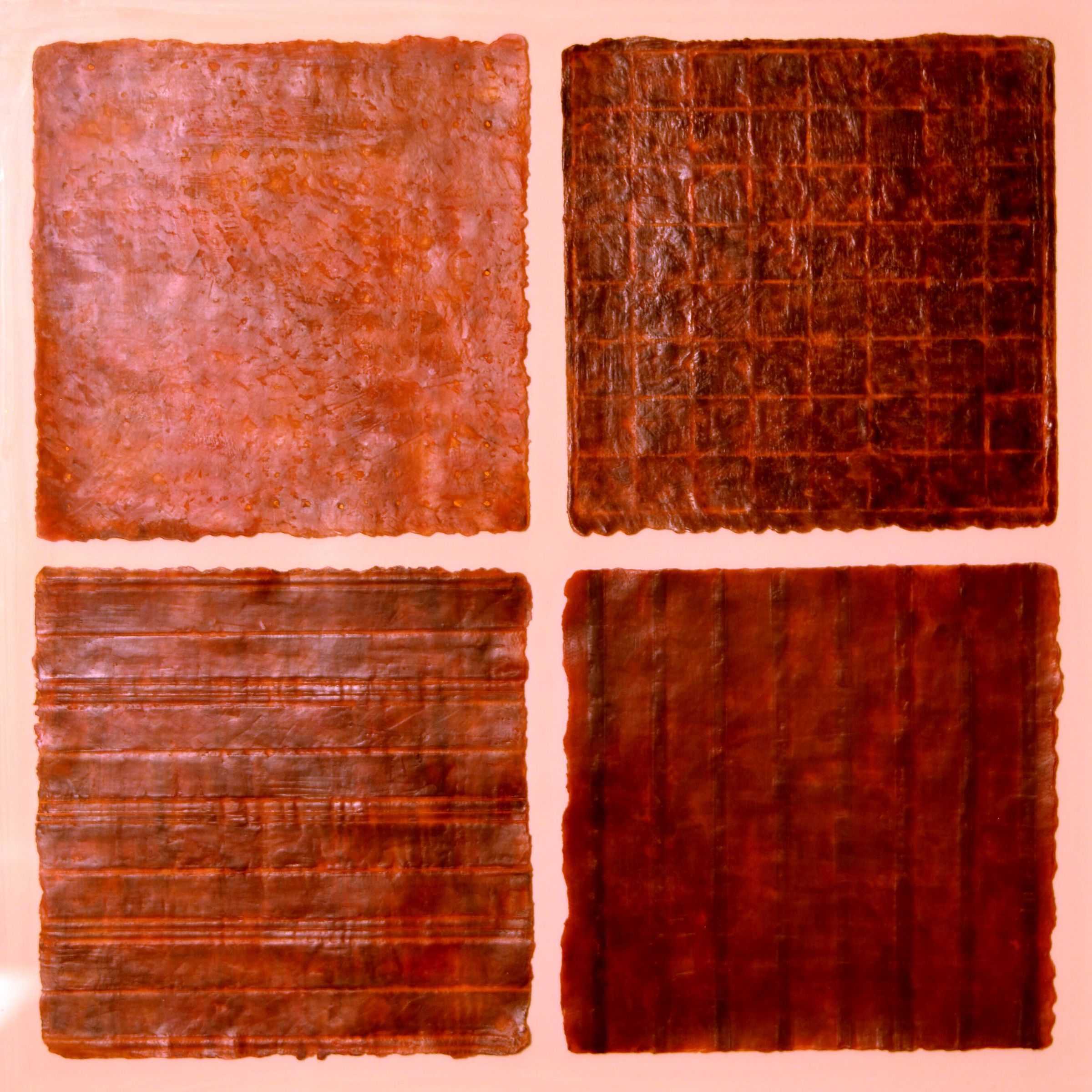Label
Artist statement, 1999: "It was 30,000 feet of aerial distance that allowed me to understand certain physical truths about my native landscape. I had grown up in Kansas, vaguely aware that this land of the gravity-hugging horizon line is a right-angle kind of place... From an airplane, all is clear. The survey system used to plot the Western territories created the right angles that are invisible-- yet intuited-- on the ground... For several years this severely geometrical landscape has been the subject of my paintings. Using encaustic on thick wood panels, I recreate these separate agricultural worlds, which share common soil and borders but often appear to exist intact from their neighbors... Though my pictures can appear to be simple geometric abstractions, they are highly representational at the same time. They are titled after small towns in the West, originally named by the 19th century railroad barons who carved them out of the prairies. I hope this series of work reflects both the beauty of 'checkerboard America,' as well as the improbability of the vast and problematic landscape."Label
2024 post:
Throughout 2024, we're looking back at the 100 year history of art at the Mulvane. Pictured is a detail of a 1999 work by Topeka-born artist and journalist Gail Gregg. During this period of her career, she used encaustic (hot wax + pigments) to create geometric compositions that evoke the landscape of the Great Plains as seen from the sky.
"It was 30,000 feet of aerial distance that allowed me to understand certain physical truths about my native landscape. I had grown up in Kansas, vaguely aware that this land of the gravity-hugging horizon line is a right-angle kind of place... From an airplane, all is clear. The survey system used to plot the Western territories created the right angles that are invisible– yet intuited –on the ground."
—Gail Gregg
